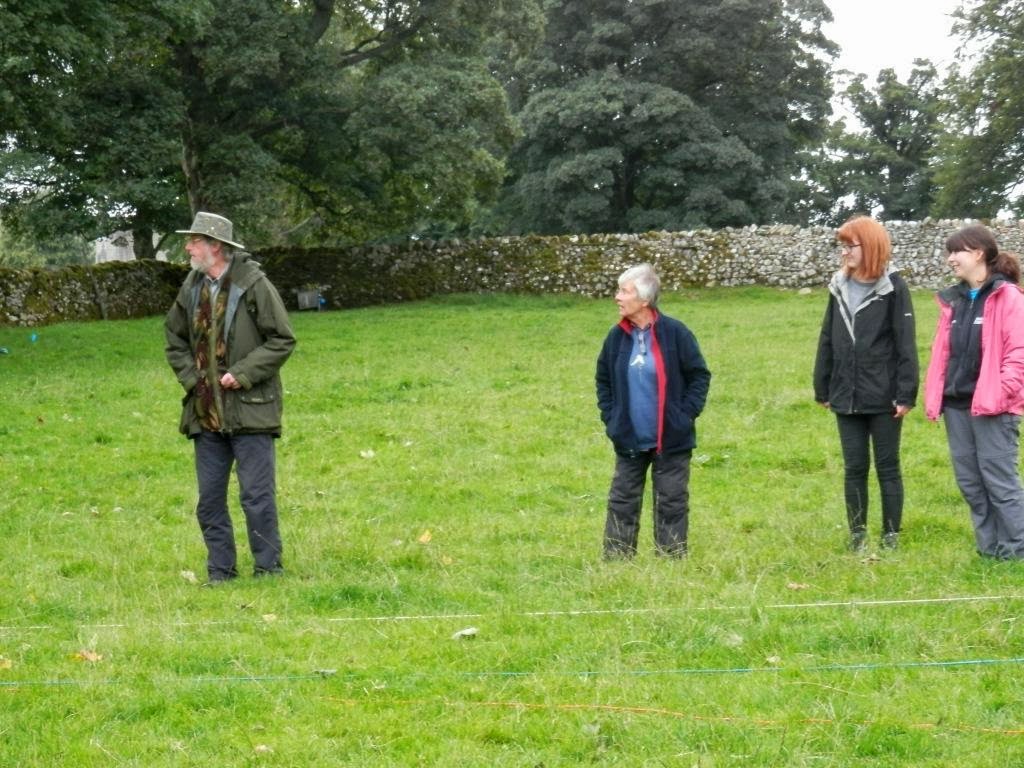Friday 13th September 2013
The project was launched this evening at Amerdale Village Hall, in Arncliffe. We were quite pleased with a turnout of about 28 people – including a good number of local residents of the village, as well as some UWHG stalwarts. It was also good to see Kevin Wood, the metal detectorist who had made the original find of the Anglo-Saxon workbox or reliquary, and human femur bone way back in 2000. It was he who had alerted the authorities to the potential of Carr Field as a significant archaeological site, and had brought archaeologist Kevin Cale in to carry out the first archaeological investigation in that same year.
 |
| Launching the project (c) photo by Roger Martlew |
Kevin gave us a very interesting presentation explaining how the 2000 excavation had take place, and what had been found. Raising more questions than answers – that’s so often the way of archaeology! – like Kevin Wood, he is very pleased that UWHG have decided to carry out follow-up work on the site, and that local residents are being invited to join in.
He explained how the original excavation revealed a curious stone structure of “cells” at the base of the linear earthwork which runs through Carr Field. That one of the large stone making up this structure was a “beehive” quern fragment was particularly intriguing as these are normally associated with Romano-British sites. But the mystery of the bones is even more intriguing. That human and animal bones should be similarly fragmented and scattered within the earthwork is very strange indeed.
Kevin’s introduction was followed by welcome cups of tea and coffee – this interval generated a lot of chatter as people milled around, catching up on news, asking questions and discussing what we’d heard so far. Our chairman, Ruth, found it quite difficult getting everyone to take their seats again for the second half.
Roger Martlew then introduced himself as the archaeological consultant who will be directing the archaeological fieldwork for the project. He explained that much of the practical work in Carr Field will take place over the next fortnight, starting with geophysics. The main hope is to find dateable material from the site.
Supporting the fieldwork there will be a mix of daytime, evening and weekend workshops, presentations and open days. Although we aim to complete the bulk of the fieldwork before the winter weather starts to close in, documentary research will continue throughout the colder, wetter months into the spring.
Everyone is welcome to join in no matter what their level of experience. We asked for volunteers to sign up, and got a good response – they queued up to put down their names, and indicate whether they were interested in fieldwork, documentary research or simply being kept in touch with the progress of the project. We were able to chat informally with several of them, and were very pleased at the enthusiasm they showed.
So it all kicks off on Monday morning at 9.30am. Let's hope the weather is kind to us!
Jane Lunnon, UWHG































